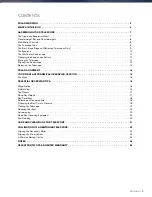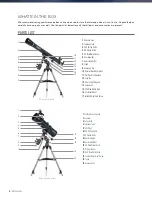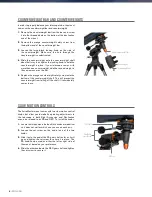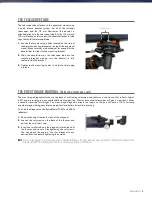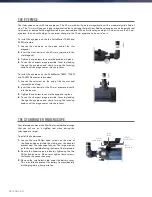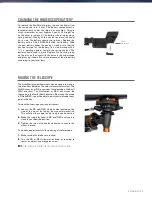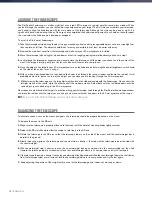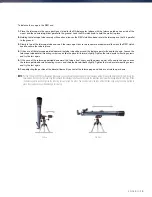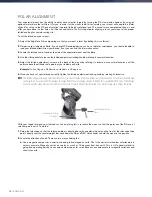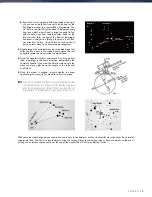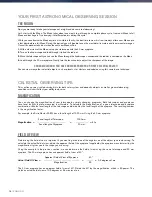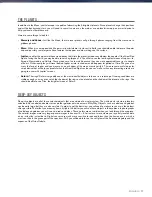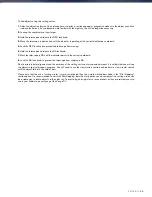
ENGLISH
I
17
THE PLANETS
In addition to the Moon, your telescope is capable of observing the 5 brightest planets Since planets change their positions
against the background stars, you will need to consult sources on the web or use a planetarium app on a smart device to
help you locate where these are
Here are some things to look for:
• Mercury and Venus- Just like the Moon, the two inner planets will go through phases ranging from thin crescents to
gibbous phases
•
Mars- When it is near opposition (the point in its orbit where it is closest to Earth) you should be able to discern the polar
cap and possibly some larger surface features that appear as dark markings on the surface
•
Jupiter- Look for the darker methane cloud bands that circle the planet just above and below the equator If the Great Red
Spot is facing the Earth, you may be able to catch a glimpse of it You will also see the four brightest moons of Jupiter – Io,
Europa, Ganymede, and Callisto These moons are fun to watch because they can move appreciably over just a couple
of hours Occasionally they will travel behind Jupiter or into its shadow and disappear for periods of time They can also
cross the face of Jupiter and you may even see a shadow of the moon crossing with it There are some useful apps for
smart devise that will help you predict when the Great Red Spot can be seen as well as when any interesting events are
going to occur with Jupiter’s moons
•
Saturn- The rings! Saturn is arguably one of the most beautiful objects to look at in a telescope If seeing conditions are
stable enough, you may even catch the shadow of the rings on the planet and the shadow of the planet on the rings You
should be able to see Titan, the brightest moon of Saturn
DEEP-SKY OBJECTS
Deep-sky objects are all of those celestial objects that are outside of our solar system They include star clusters, planetary
nebulae, diffuse nebulae, double stars and other galaxies outside our own Milky Way Objects such as nebulae and galaxies
can be quite large, but they are also very faint In order to get the best view, you will need to make sure you are in the darkest
skies possible The farther you are away from city lights, the better you will see these objects in the eyepiece In photographs
of nebulae and galaxies, you will see vivid reds and blues These colors are not visible when you look through the eyepiece
The colorful images were very long exposure images taken over 15 – 60 minutes or more, where your eye only records data
on an instant by instant basis Digital sensors are much more sensitive to reds and blues than the human eye is which is
most sensitive in the green part of the spectrum Still, you will be able to see the soft glow of the Andromeda galaxy and the
expanse of the Orion Nebula
Summary of Contents for ASTROMASTER EQ
Page 2: ......
Page 4: ...4 I ENGLISH ...
Page 26: ...26 I ENGLISH NOTES ...
Page 27: ...ENGLISH I 27 NOTES ...
Page 30: ......
Page 32: ...4 I FRANÇAIS ...
Page 54: ...26 I FRANÇAIS NOTES ...
Page 55: ...FRANÇAIS I 27 NOTES ...
Page 58: ......
Page 60: ...4 I DEUTSCH ...
Page 82: ...26 I DEUTSCH HINWEISE ...
Page 83: ...DEUTSCH I 27 HINWEISE ...
Page 86: ......
Page 88: ...4 I ESPAÑOL ...
Page 110: ...26 I ESPAÑOL NOTAS ...
Page 111: ...ESPAÑOL I 27 NOTAS ...
Page 114: ......
Page 116: ...4 I ITALIANO ...
Page 138: ...26 I ITALIANO NOTE ...
Page 139: ...ITALIANO I 27 NOTE ...

